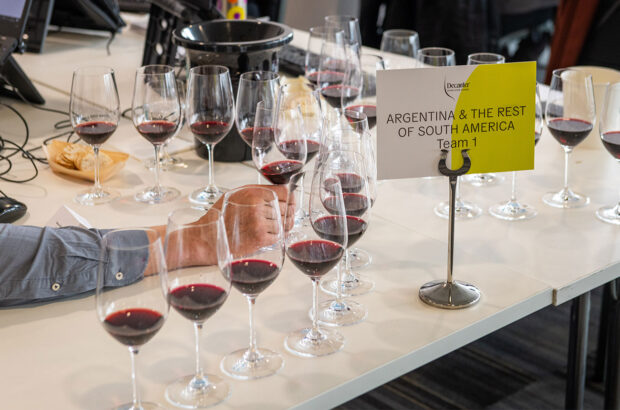With the autumn equinox on the horizon on 22 September, days are getting shorter and late summer nostalgia weaves into the appeal of longer evenings and richer meals. Darker rosés are some of the best transitional wines for this period.
As we enjoy the last of the season’s barbecues and garden parties, these deep-hued pours are best enjoyed alongside some nibbles and served slightly less chilled than their paler counterparts.
Regions and appellations producing dark rosé wines:
Cerasuolo d’Abbruzzo – Abruzzo, Italy
Chiaretto di Bardolino – Verona, Italy
Cigales and Ribera del Duero – Spain (namely Clarete styles)
Nemea – Peloponnese, Greece
Tavel – Rhône, France
What makes the colour of a rosé more or less intense?
Two main factors contribute to the colour of a rosé wine: winemaking method and grape variety.
Wine gets its colour from the grape skins. The longer the grape juice is in contact (or macerated) with the skins, the more colour, aroma, flavour and tannin will be extracted.
Pale Provence-style rosés are mostly produced using the direct press method without extended maceration.
Whereas Tavel winemakers typically macerate for up to 48 hours, for wines comparatively more intense and deeper-hued. For context, in red wine production the juice macerates on the grape skins for anything from a week to over a month.
Grapes with thicker skins will produce more colour in the wine than thin-skinned varieties. Hence why a rosé made from Garnacha is generally more intense than one produced from Pinot Noir, if macerated for a similar number of hours.
A traditional style, revived
Pale rosé wines are in fact a relatively modern trend, dating back to the 1980s, only made possible by technological advancements in refrigeration, cold stabilisation and sterile filtration.
Previously, rosé wines were more akin to light reds in both colour and structure. They were either a product of short, but not insignificant, macerations or co-fermentation of red and white grapes. Generally produced as a cheaper wine for local consumption, they were often seen as ‘farmer’s wines’ which in turn led to the perception of light rosés as a more sophisticated alternative.
There is, however, renewed interest in these more traditional styles of rosé, fuelled by a growing movement towards terroir specificity, historical research, varietal expression and low-intervention winemaking.
The revival of Clarete in Spain and Palhete in Portugal is an example of this new trend.
Perfect food companions
It’s not by chance that the French call these deeper hued wines ‘rosés d’assiette’ – in other words, rosés to eat with. Dark rosés are ideal food companions and versatile when it comes to pairings.
Whether you are planning the season’s last barbecues or looking for a dry alternative to serve alongside fruit-based desserts, an intense rosé will not let you down. Their textural richness, aromatic intensity and subtle tannins are the ideal combination to handle a wide range of foods, and therefore often favoured by sommeliers.
Dark rosé wines for late summer drinking:
Wines shown in score order








